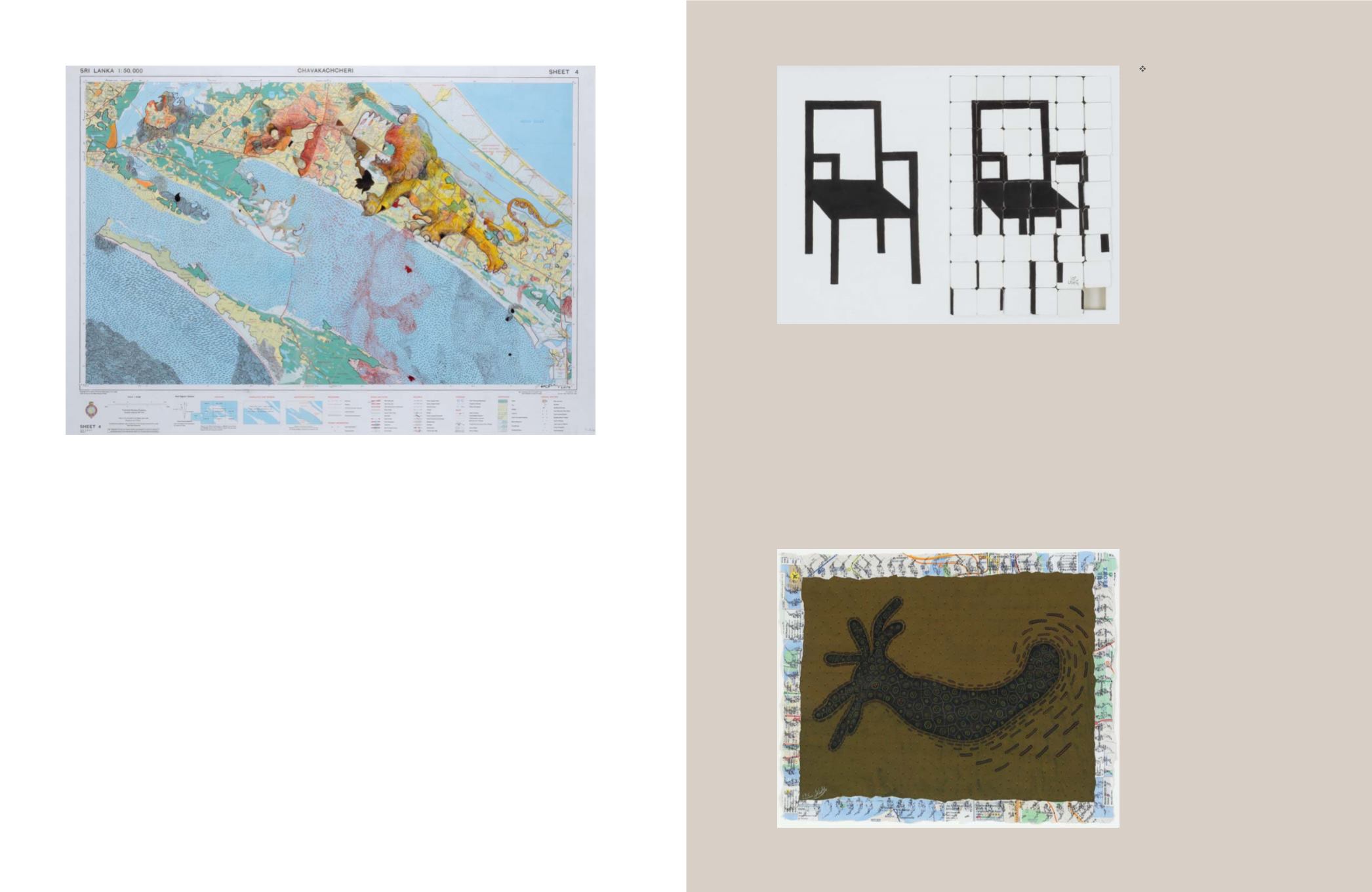

123
122
NOVEMBER 2016 | THE TIES THAT BIND
107
AMJAD ALI TALPUR
(b. 1970)
Untitled
Signed in Arabic and dated '07'
(lower right) and signed 'Amjad
Ali Talpur' (on the reverse)
2007
Gouache and collage on paper
9.75 x 13.5 in (25 x 34 cm)
$ 1,000 - 1,500
Rs 66,000 - 99,000
108
TALHA RATHORE
(b. 1970)
Untitled
Signed and dated in Urdu (lower
left)
2007
Watercolour on wasli paper
pasted on board
11.25 x 14 in (28.3 x 35.6 cm)
$ 3,035 - 4,550
Rs 2,00,000 - 3,00,000
PROVENANCE:
Aicon Gallery, London
Private Collection, West India
EXHIBITED:
Lahore Lovelies: Talha Rathore and
Hasnat Mehmood
, London: Aicon
Gallery, 22 June - 15 July 2007
PUBLISHED:
Lahore Lovelies: Talha Rathore and
Hasnat Mehmood
, London: Aicon
Gallery, 2007, p. 9
106
PALA POTHUPITIYE
(b. 1972)
Chavakachcheri Map
Signed in Tamil and dated ''2013' (lower right)
2013
Government printed map, ink, pencil, marker and
colour pencil on paper
25.75 x 35.5 in (65.4 x 90.2 cm)
$ 3,035 - 4,550
Rs 2,00,000 - 3,00,000
PROVENANCE:
Private Collection, New Delhi
Colombo-based contemporary artist Pala Pothupitiye
is part of the ‘90s Trend,’ an art revolution in Sri Lanka
that emerged in response to the civil war that affected
the nation for more than two decades. Pothupitiye’s
work in this context confronts societal issues raised
by the war, and subtly and thoughtfully questions the
politics of power on his canvas.
Among his works is the map series, a set of re-worked
survey maps of the Sri Lankan island’s northern coast,
where “...inlets and islands are transformed into the
roaring jaws of a tiger rendered in red ballpoint pen,
while headlands become the angry faces of lions,
drawn in pencil. Together the lion, Sri Lanka’s national
symbol, and the tiger, in reference to the rebel Tamil
Tigers, form the composite ‘liger’, a motif which now
recurs in Pothupitiye’s work.” (Josephine Breese, “Sri
Lankan Contemporary Art,”
thewhitereview.org, June
2011, online)
Pothupitiye’s maps draw attention to the political
dynamics of neo-colonial Sri Lanka in transition, and
the uncertainty it imposes on the common man.
Pothupitiye says, “I started the map series when I got
interested in geopolitics and neo-colonialism. I want
to talk about how countries hide greed with religion
and how there is a big monopolisation taking place
in our South East Asian region.” (Juliet Coombe,
The Power of Sri Lankan Art, 1943-2012
, Galle: Sri
Serendipity Publishing House, 2012, p. 221)


















